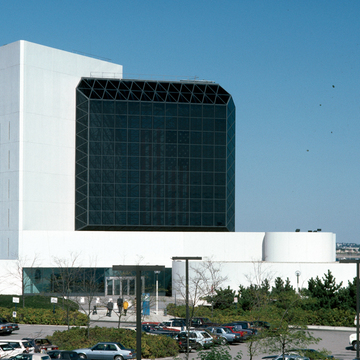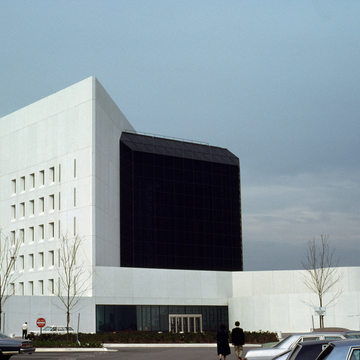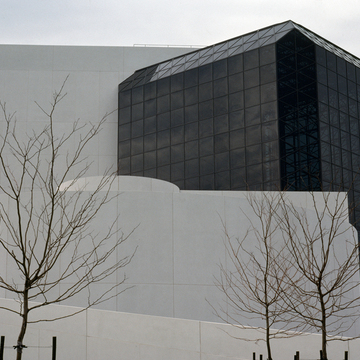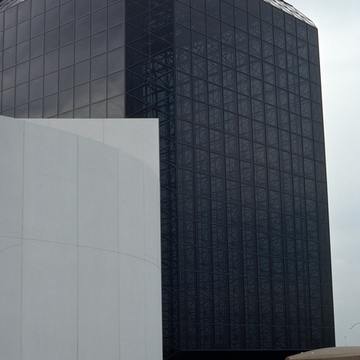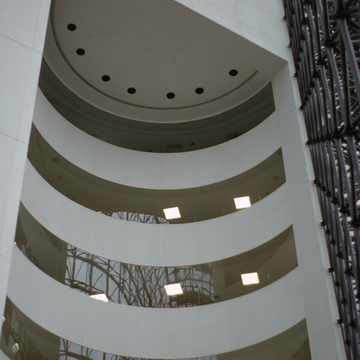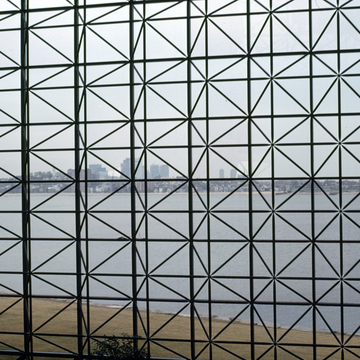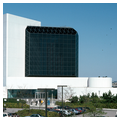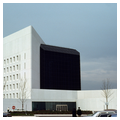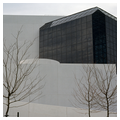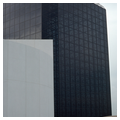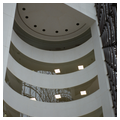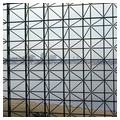Many a viewer’s first sight of this library is from the air—flying into or out of Boston. Its highly visible three intersecting geometric forms are sharply delineated in contrasting black and white. Housing the papers and memorabilia of President John F. Kennedy, the library was built on a 9.8-acre landfill site to serve as an educational research center and museum, though the latter plays a dominant role. The grand gray glass pavilion—a ten-story space enclosed with solar double-glazing—is the center of the complex, its only decoration a huge American flag. Enlivened by the changes of light and atmosphere, the space draws us to the panorama of Boston Harbor, where JFK's sailboat is moored. Even the exterior landscaping attempts to replicate the vegetation of Kennedy’s beloved Cape Cod—pines, bayberries, and rugosa roses, with distant evocations of the island's dunes. Stark precast-concrete panels constitute the forms separating the triangular library, the arch of the theater, and the museum between with its focus on the glass pavilion. A curved stairway following the contours of the auditorium descends to the sea, giving the visitor visible access to the city across the harbor. Not surprisingly, this nautical composition has been deemed a lighthouse on the sea—a symbol of the optimism marking the presidency of John F. Kennedy.
You are here
John F. Kennedy Library and Museum
If SAH Archipedia has been useful to you, please consider supporting it.
SAH Archipedia tells the story of the United States through its buildings, landscapes, and cities. This freely available resource empowers the public with authoritative knowledge that deepens their understanding and appreciation of the built environment. But the Society of Architectural Historians, which created SAH Archipedia with University of Virginia Press, needs your support to maintain the high-caliber research, writing, photography, cartography, editing, design, and programming that make SAH Archipedia a trusted online resource available to all who value the history of place, heritage tourism, and learning.















